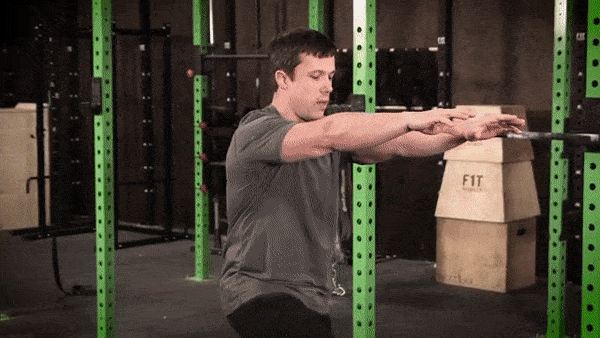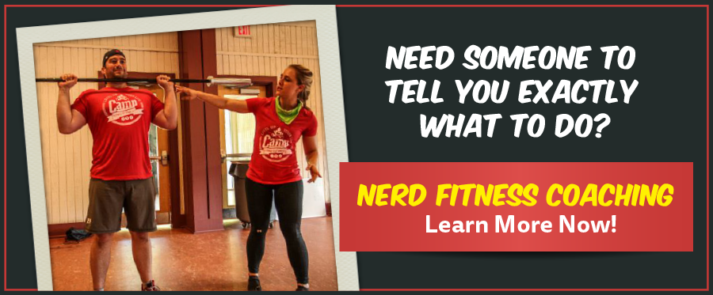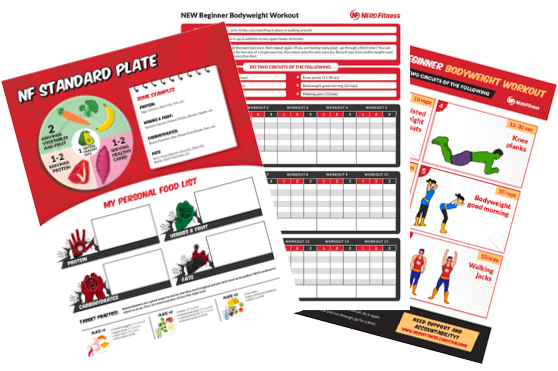
Want to go from a skinny guy to building muscle quickly? I got you.
I’ve spent my entire life trying to pack on muscle, and after years and years of trial and error, I finally cracked the code.
Today, I share that code with you! Up, up, down down, left, right…
Wait, wrong code.
This is a topic that is near and dear to me because I’ve spent my life devoted to this stuff:

These are the exact tactics I’ve used and the same strategies we use with our Online Coaching Clients.
This free guide is gonna get you started off on the right foot!
Here are the 4 parts we’ll cover in this ultimate guide:
#1) INTRO:
#2) NUTRITION:
- The most important thing for putting on muscle (your diet).
- What foods should I eat to bulk up?
- What supplements should I take to bulk up and build muscle?
#3) STRENGTH TRAINING:
- How to grow bigger muscles (get stronger).
- Skinny Guy Workout Plans for bulking up.
- Can bodyweight training help you bulk up?
- I am skinny fat: should I gain weight or lose weight first?
#4) RECOVERY, TIPS AND TRICKS, NEXT STEP:
- Proper sleep and rest for putting on muscle.
- FAQ for skinny guys trying to bulk up.
- More resources for skinny guys looking to bulk up.
We also have nutrition guides, shopping lists, and workouts you can download for FREE when you sign up for our newsletter.
Alright, let’s get to it!
How I Bulked up After Years of Struggling as a Skinny Guy

Growing up, I was always the scrawny, skinny weak kid.
There was a reason I dressed up like Superman every other day for the first six years of my life:
Superman was strong, big, and powerful…and I wasn’t.
To this day, it’s still a big challenge for me to gain weight or build muscle.
When I was cut from the high school basketball team (for being bad at basketball, mostly), I decided I needed to get bigger and stronger, so I signed up for a gym membership to get big and strong.
Within five minutes, I had almost killed myself when loading up way too much weight for a set of bench presses.
Fortunately, I survived and thus began my love affair with strength training.
I spent the next six years training in a gym, reading every muscle and fitness magazine I could find, drinking protein shakes religiously…and had about 3 pounds of muscle gain to show for it.
I just assumed “I’m one of those people who can’t gain weight.”
It turns out, I was doing it all wrong.

After graduating college, I moved to California, signed up for a gym membership, and received a few free personal trainer sessions.
Although I thought I had known it all (I had been training for 6 years in a gym! I read the muscle mags! I was in good shape already!), I still took the free sessions for the hell of it.
I’m so glad I did!
The trainer drastically simplified my workout and DOUBLED the amount of food I was eating.
I thought he was crazy at first, but I stuck with it.
In 30 days, I had put on 18 pounds (pictured below), increased the strength for ALL of my lifts, and felt more confident than I ever had before in my life.
That’s when the lightbulb went off in my head: turns out I had been telling myself a lie.
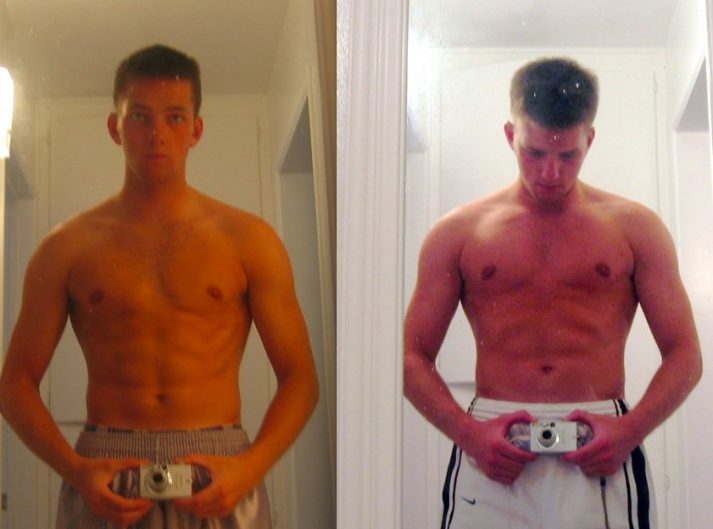
Thus began a radical redefinition of how I thought the human body worked, how muscle was built, and where I needed to put my priorities.
Since then, I’ve spent over 15 years learning everything I can about how muscle is built.
A few years back, I took an epic 35,000-mile trip around the world, and despite not having access to a gym for 6 months, I managed to pack on even more muscle and get myself in great shape without once picking up a weight (pictured below):
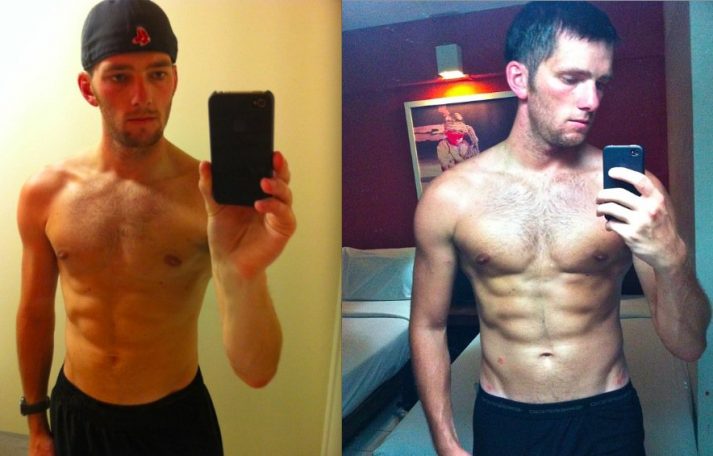
Again, my world was turned upside down.
I learned that gyms are not a requirement for building muscle and getting stronger, though a great gym workout can certainly speed up the process.
And after a few more years of up and down challenges, I had finally – jokingly – changed from Steve Rogers to Captain America (there’s a story behind this):

I’m still not the biggest guy in the world, nor will I ever be. I’m okay with that!
I’ve learned that anyone can pack on muscle, even skinny nerds like me.
If you’re skinny and want to get bigger, you’ll be fighting genetics the whole way, but do not let that deter you.
Today’s article outlines everything I’ve learned over the past 15+ years of mistakes, successes, failures, and adventures.
The Most Important Thing for Putting on Muscle: Eat More Food.

As they say, muscle isn’t made in the gym, but in the kitchen:
If you want to bulk up, you’d be better off working out twice a week for 30 minutes and eating enough calories/protein, than working out 6 days a week and not eating enough.
I learned this the hard way.
I spent four years of college working out five days a week for 90 minutes a day trying to get bigger.
I drank protein shakes like I thought I was supposed to. I got a little stronger but never bigger.
Why?
BECAUSE I DIDN’T EAT ENOUGH CALORIES.

When I get emails from people who lament the fact that they can’t gain weight, I always first ask about the person’s diet.
More often than not, that person thinks they are eating enough, but are definitely not.
Here’s the truth:
If you are not getting bigger, you are not eating enough.
Your body can burn 2000+ calories every day just existing (and then factor in exercise and, gulp, cardio – I’ll get to that in a minute), and you need to overload your system with calories in order for it to have enough fuel for the muscle-building process.
Want to know how many calories you burn every day just existing?
Plug your stats into our TDEE (Total daily energy expenditure) calculator:
Nerd Fitness Total Daily Energy Expenditure Calculator
Basal Metabolic Rate (BMR)
0
Your BMR is an estimate of the total calories burned a day, while in a state of rest.
TDEE
0
Your TDEE is an estimate of the total calories burned during a single day, when exercise is factored in.
Note: we have used The Mifflin-St Jeor Equation to create this calculator! [1]
For every person, the number of required calories for bulking up daily is different. You need to factor in your age, your height, your current weight, how much you move and fidget throughout the day, and how much weight you want to gain:
- For some people, it might be 2,000 calories a day.
- For others, it might be 3,000 calories a day.
- For others, it might be 4,000 calories a day.
While calorie counting isn’t required to put on mass, I think for a newbie starting out tracking calories for a few days is a great place to begin. It gives you a snapshot of your current eating patterns and helps you avoid a lot of heartache later on. No one wants to spend months trying to gain muscle only to realize they vastly overestimated how much they were eating!
(Of course, this doesn’t mean you need to track calories forever. In our coaching program, we use a combination of calorie tracking and a “Balanced Plate” approach to find what works best for each client.)
So, track your calories using something like MyFitnessPal over a few days and get an average.
I bet you’ll discover you’re eating significantly less than you thought you were.
Once you’ve learned how many calories your body burns daily…
Eat MORE than that!

How much more, you may ask? Time to do a little math.
Step 1: Calculate your TDEE (total daily energy expenditure.)
Step 2: Calculate how many additional calories you need to eat to gain weight.
- We recommend you aim to gain 0.25-0.5% of your body weight per week.
- If you weigh 150lbs, that would be 0/3-0.75 lbs per week
- Multiply that increase in weight by 3500 calories (3500 calories = 1 pound)
- In the above example, you would need to eat an extra 200-400 calories per day.
Step 3: Track your progress for 2-3 weeks and reassess.
- Spend the next two weeks eating those additional calories and see how your weight adjusts and how you look in progress photos!
- If you are not getting bigger, add 250 additional calories per day and repeat the process.
Some people will bulk up much faster by overeating more calories than this, but we don’t recommend it. Your body has a limit to how much muscle it can naturally build each week.
Everybody’s results will vary (thanks genetics!):
- Under optimal conditions, some say you can expect to gain 1 pound (.5 kg) of muscle per week.
- My results have shown that 2 lbs (1kg) per month is more realistic.
- A 2016 study[2]revealed that strength training produced a 2.2 lb increase (1kg) increase in lean mass in 8 weeks.
When you exceed your muscle-building capacity, those extra calories are stored as body fat, not as muscle – which isn’t necessarily a bad thing. There will likely always be SOME fat put on while you bulk – it won’t be 100% muscle even for people like professional bodybuilders with great genetics.
Here are things to consider if you overeat WHILE strength training: extra glycogen, some fat, and water stored in your body can be a good thing for your confidence and get you headed down the right path.
So, don’t listen to the sites or programs that say “gain 40 pounds of muscle in two months!”
It’s going to be a slow, long process.
Yes, it is possible to have incredible transformations in a short amount of time, like when I gained 18 pounds (8.1kg) in 30 days
This was due to strength training, overeating, protein, and extra water weight (from supplementing with creatine):
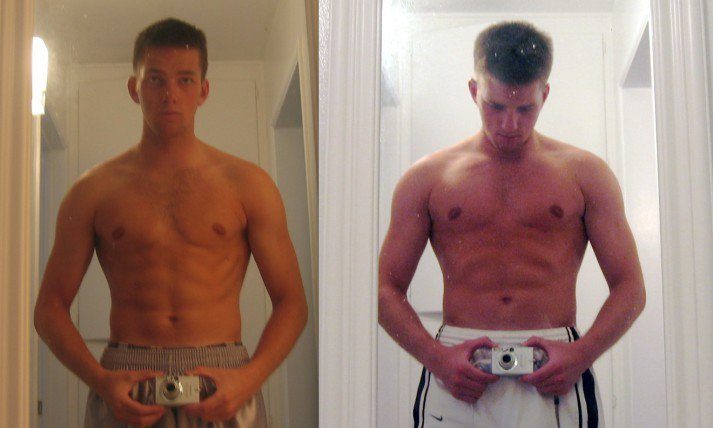
My advice: Rather than massive weight gain over a month, you’d be much better off gaining .5-1.5 lbs. (.25-.75 kg) a week, every week, for several months at a time…and keeping the weight on!
Now, I know this isn’t easy.
There’s nothing worse than spending 6+ months in a gym and doing what you think you SHOULD be doing, only to step on the scale and realize that you haven’t made any progress!
If you’re somebody who’s worried about wasting time, or you want to have an expert guide your nutrition based on your current situation, consider checking out our Online Training Program!
What Food Should I Eat to Bulk Up?
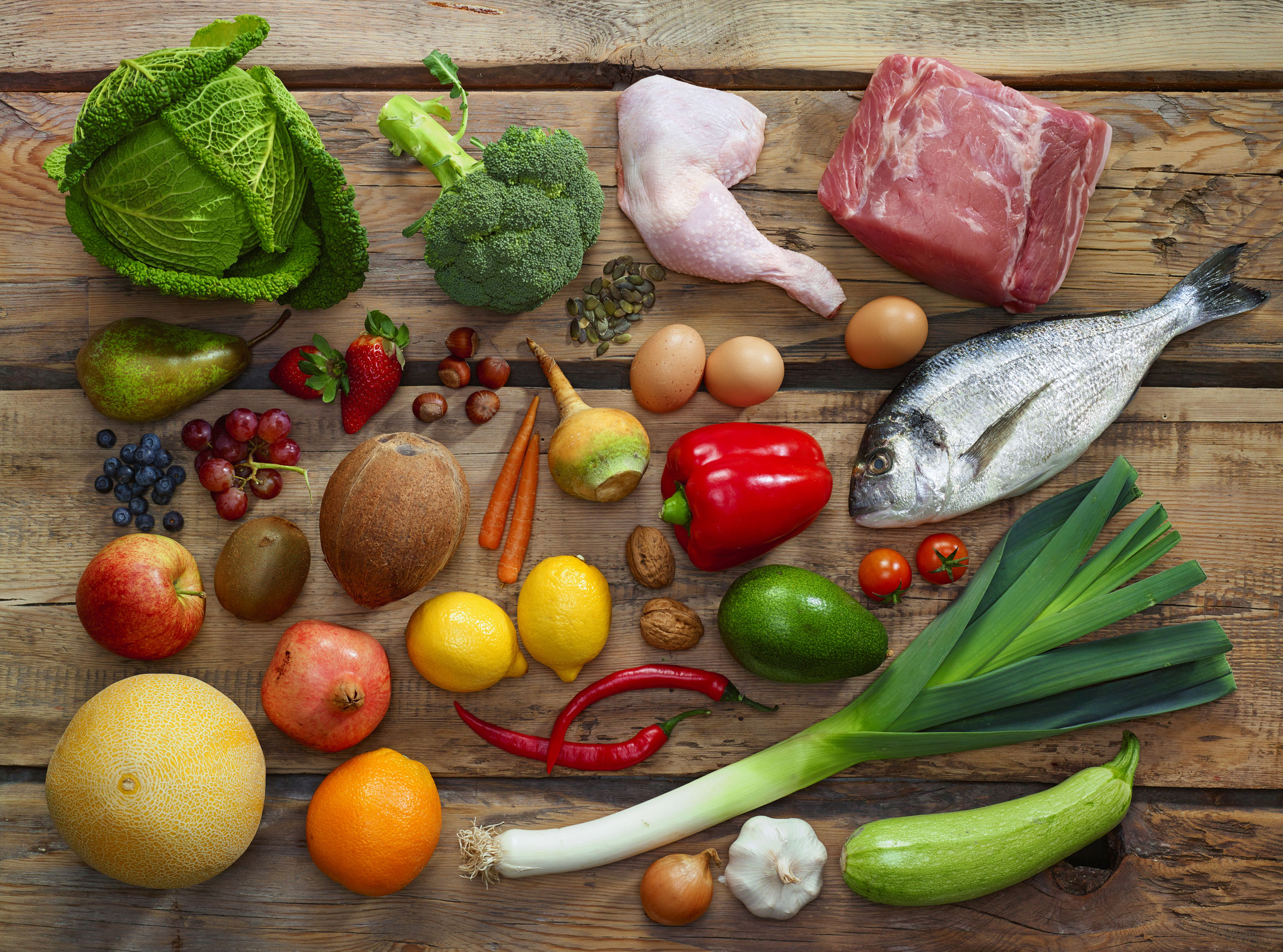
Let’s go through how you should be prioritizing your nutrition, nutrient by nutrient:
- Protein: rebuilds muscle after you break it down.
- Carbohydrates: provide your muscle with fuel and your body with energy
- Fat: helps your bodily functions and can also be burned as fuel in the absence of carbs.
Let’s look at each of these individually:
PRIORITY #1: PROTEIN
Protein can come from any number of sources, including:
- Meat (steak, bison, pork).
- Fowl (chicken, turkey, duck).
- Eggs![3]
- Cheese and dairy.
- Fish and shellfish (salmon, tuna, shrimp).
- Legumes (black beans, chickpeas).
- Other vegetarian protein sources here.
As we cover in our “How much Protein do I need?”, claims for the amount of protein needed vary wildly from source to source (and athlete to athlete).
Here is our recommendation for protein consumption:
If you’re of healthy weight, active, and wish to build muscle, aim for 0.8g/lb (1.6g/kg). [16]
If you get all of your protein from plant-based sources, you may want to aim slightly higher at around 1.0g/lb (2.2g/kg). This covers for plant-based sources that don’t have as complete an amino acid profile as meat and dairy.
If you want to keep it simple, target ~1 gram of protein per pound of body weight (2.2 grams per kg).
If you’re curious, this is what a portion of protein looks like from our healthy eating article:
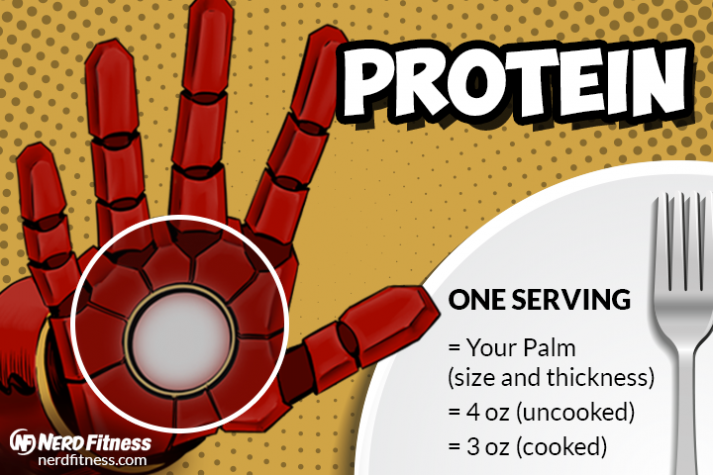
Also, here’s how much protein is in a serving of food:
- 4 oz (113 g) of chicken has around 30 g of protein.
- 4 oz (113 g) of salmon has 23 g of protein
- 4 oz (113 g) of steak has 28 g of protein.
Want to get more protein? Consider protein shakes, like so:
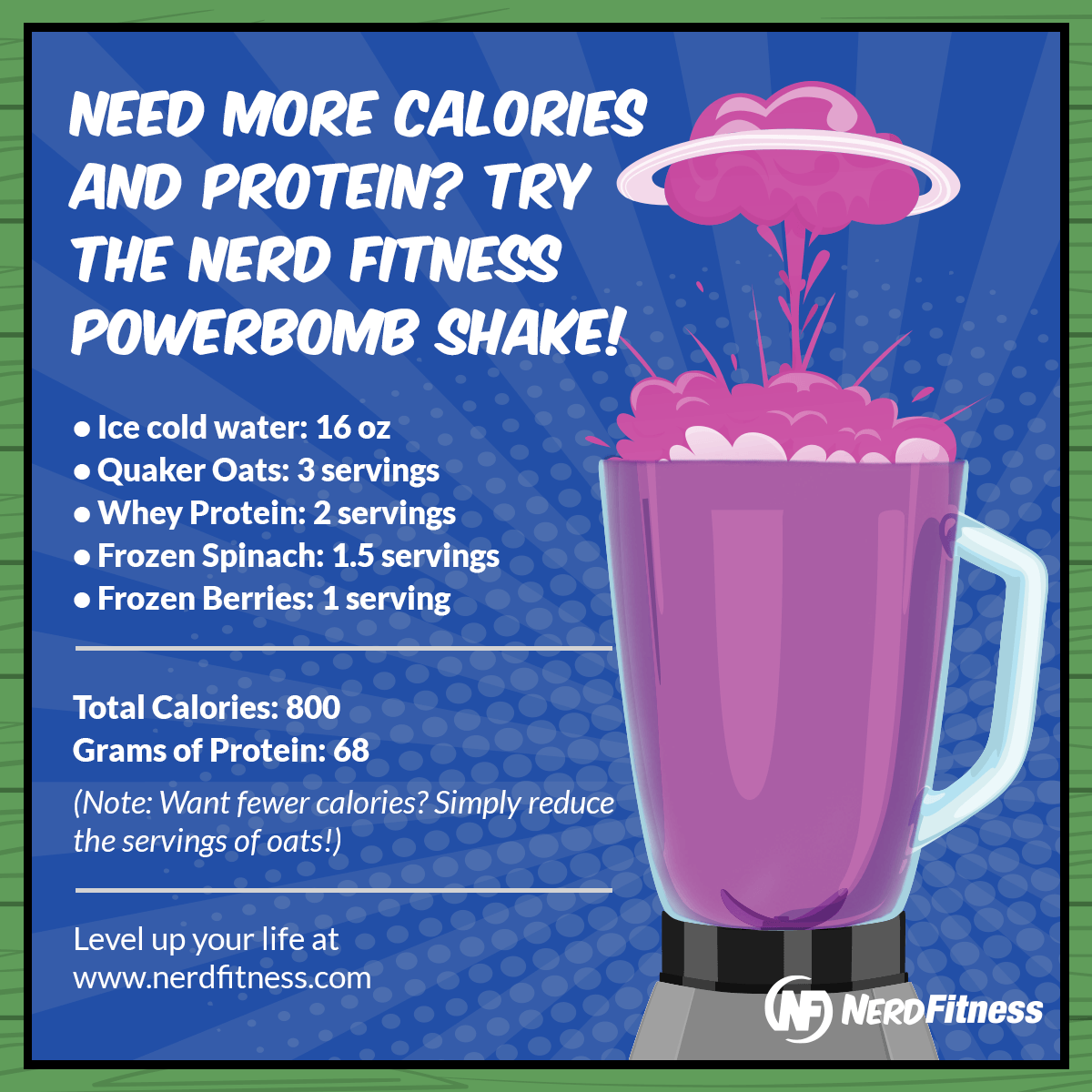
PRIORITY #2: CARBS
After protein, to get bigger, you need to eat enough calories, and those calories should come from sources composed of carbs and/or fats.
Making sure your muscle’s glycogen stores (which primarily comes from consuming carbohydrates) is full also helps prevent the breakdown of protein into energy (i.e. breaking down muscle tissue for energy!) That’s a pretty big deal when we are trying to bulk up!
Here are foods full of carbohydrates you can prioritize for bulking up:
- Rice
- Quinoa
- Oats
- Legumes and lentils
- Sweet potatoes
- Yams
- Regular potatoes
- Whole grain pasta
- Whole grain bread
To help you get better at eyeballing serving sizes:
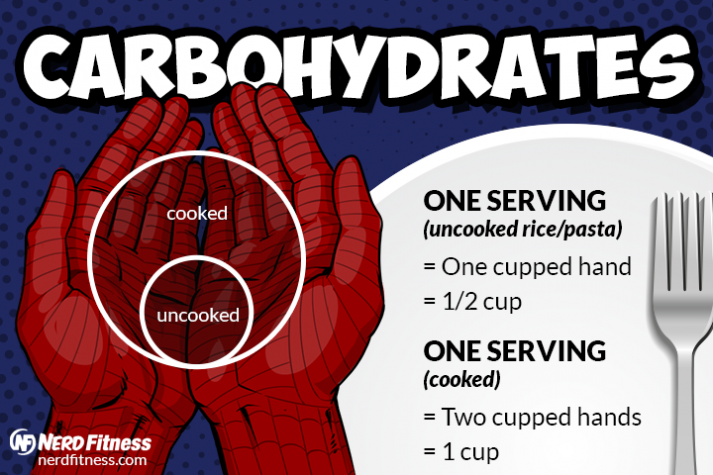
1 serving of a starchy carbohydrate is 1 cupped hand (uncooked), or your two hands forming a cup (cooked).
Here are some images to help you learn proper portion sizes (thanks to SafeFood):
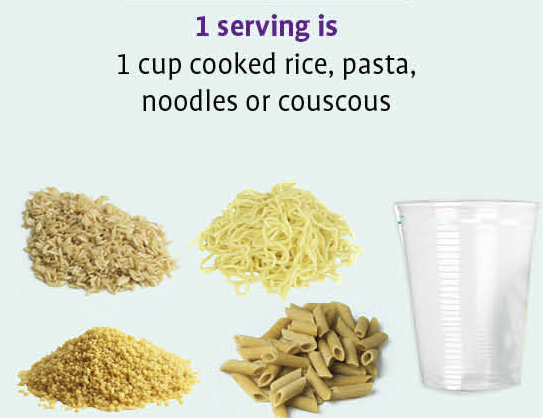
In addition to consuming carbohydrates from these sources, there are tons of other great options like fruit, starchy tubers like potatoes or yams, and more.
PRIORITY #3: FAT!
Fat is a macronutrient that can help you reach your goals in the right quantity. It’s higher in calories, so a little bit can go a long way. Especially if you struggle to eat enough calories, adding more fat to your diet can help you increase your calories without feeling too full.
Healthy fat can be found in foods like:
- Avocado
- Almonds
- Walnuts
- Macadamia nuts
- Olive oil
- Almond butter
- Peanut butter
What about saturated fat? Is that OK to eat when I’m bulking up? In moderation, saturated fats can absolutely be a part of your diet! [4]. We recommend keeping saturated fats to 10-20% of your total fat intake.
Saturated fats can come from things like:
- Whole milk
- Full-fat dairy
- Coconut oil
- Grass-fed butter
- Fatty cuts of meat
- Lard
To help you gauge: a serving size of fat is roughly the size of your thumb!
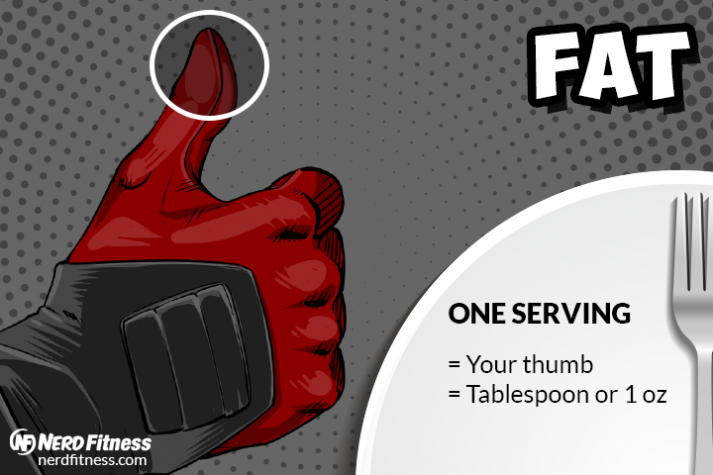
For reference, this is a single serving of almonds (162 calories):

THIS is a serving of olive oil (119 calories):
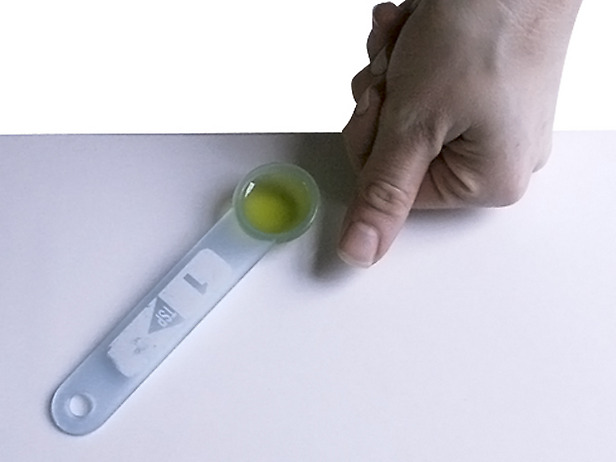
As you can see, you can eat an extra 500 calories of “healthy fats” by eating lots of “heart-healthy” fats like nuts or adding more olive oil to your meals.
PRIORITY #4: VEGETABLES!
Last but not least, fruit and vegetables.
If you start to eat a lot more food, your “indoor plumbing” is going to really benefit from eating some high-fiber veggies with each meal:
A serving of veggies is about the size of your fist.
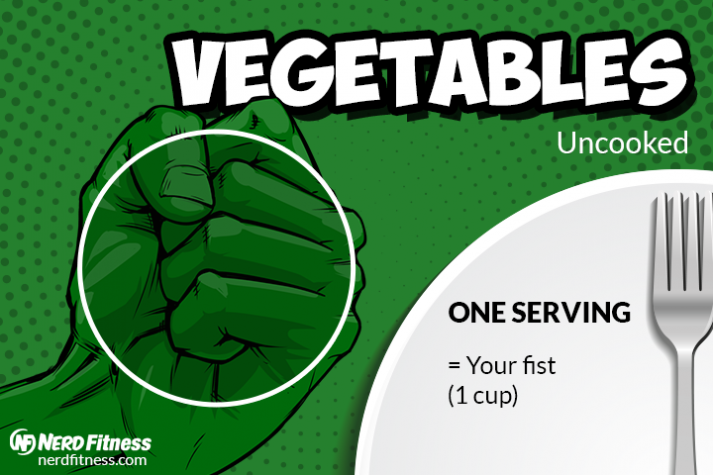
Here’s a quick, non-complete list of veggies that can fill your plate:
- Broccoli
- Broccolini
- Cauliflower
- Spinach
- Kale
- Spaghetti squash
- Brussels sprouts
- Zucchini
- Cucumber
- Carrots
- Onion
- Asparagus
BRINGING IT ALL TOGETHER:
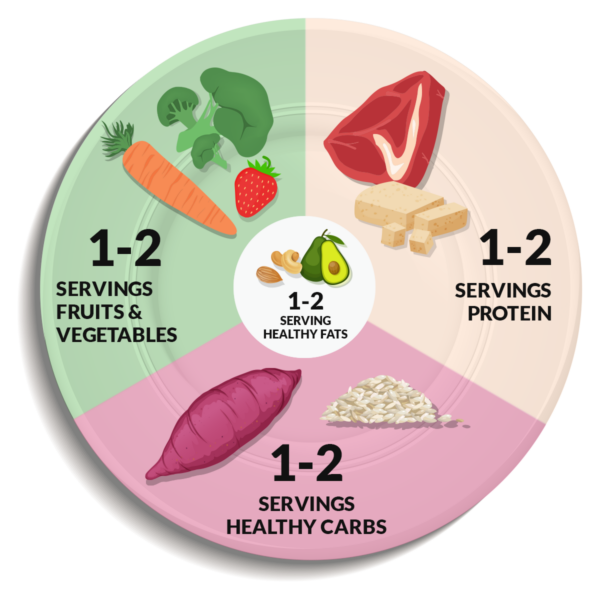
This plate and serving size stuff above is just to help you get started thinking about healthy food differently and in proper portion sizes.
To recap:
HERE’S HOW TO EAT TO BULK UP:
- Calculate your (Total daily energy expenditure) and add enough calories to increase 0.25-0.5% of your body weight per week.
- Consume 0.8-1g per pound (1.6-2.2g per kg) of body weight in protein every day.
- Consume the rest of your calories from foods composed of carbs and fats.
- Eat vegetables to keep up your fiber and micronutrient content for your general health.
- If you are not gaining weight, add more carbs and/or fats to your meal.
It really does come down to the following:
If you are not gaining weight fast enough, you are not eating enough. Increase your portions of carbohydrates and fats!
Whenever we work with coaching clients who struggle to bulk up, this is the area we target: adding more carbs and fats to each meal.
What Supplements Should I take to Bulk up? How to eat more calories.
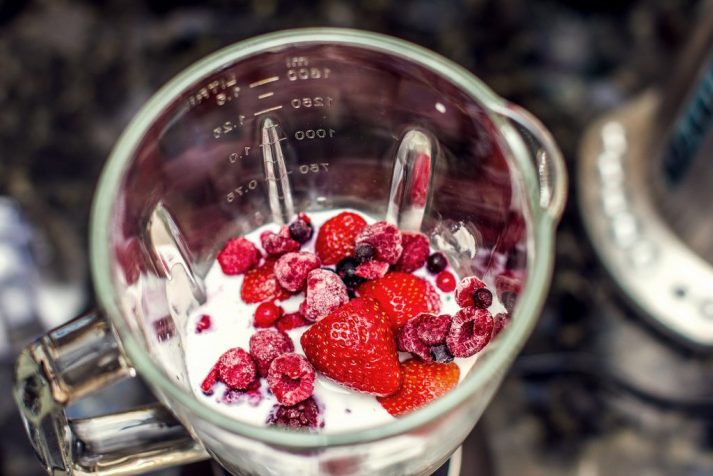
If you are struggling to consume enough food every day, then here are some tips to help you reach your caloric goals to bulk up:
“WHAT SUPPLEMENTS SHOULD I TAKE TO BULK UP FAST?”
Most supplements are garbage.

HOWEVER, if you are interested in bulking quickly, there are two I would recommend:
- Protein Powder. A great solution for getting extra protein and calories in your diet and building muscle.[5] As we point out in our article on protein and protein shakes, mix and match your own ingredients and see how many calories you can get into a smoothie without breaking your blender.
- Creatine supplement. It helps your muscles retain more water, and have more energy and power to push your workouts hard (which will be another key component of bulking up, adding muscle!) [6], and has been shown to increase the hormone IGF-1, which is needed for muscle growth[7].
Outside of these two supplements, you really don’t need to prioritize supplementation, despite what the muscle magazines tell you!

I’ll leave you with a couple more suggestions on how to bulk up in this section:
#1) Liquid calories are your friend. Liquid calories can give us lots of calories without ‘filling us up,’ which is an easier way to consume enough calories every day without feeling overly full.
I personally get a huge chunk of my calories every day from making my own ‘Powerbomb Shake – from our Protein Guide:
- Water: 16 oz.
- Quaker Oats: 3 servings (120g)
- Frozen spinach: 1.5 servings (120g)
- Frozen mixed berries: 1.5 servings (120g)
- Protein powder: 2 scoops of Optimum Nutrition Vanilla Whey
And here is the macronutrient breakdown:
- Calories: 815 cal
- Protein: 70g
- Carbs: 107g
- Fats: 12g
If you need even more calories consider adding whole milk, coconut milk, or almond milk instead of water.
I like to buy Frozen berries and Frozen Spinach from Trader Joes, but you can buy in any grocery store!
You can also add a shot of olive oil to add calories/fats to a shake in the quest for MOAR MUSCLE!
#2) Keep your protein intake to the lower end of the 0.8-1g/lb range.
Wait, Steve, are you actually telling me to eat LESS protein? In this case, yes! If you’re struggling to get enough calories in, I recommend you keep protein at the optimal range of 0.8g/lb of body weight, and not any higher.
You’ve already maximized muscle synthesis, so any additional protein is just going to fill you up more (since protein is the most satiating macronutrient.)
#3) Use food palatability to your favor.
Highly palatable foods (like those containing lots of flavor, carbs, and fats) are less filling and tend to want to make you eat more of them. This is essentially the opposite advice of someone on a fat loss diet – but can be useful if you struggle to get enough calories to bulk!
#4) Continue to slowly increase your portion sizes or add more meals throughout the day
If you’re someone who’s struggled to put on weight your whole life, a lot of that could be due to the fact that you just don’t feel all that good when you try to eat more food!
There’s really no way around the fact that we’re going to have to increase the amount of food you eat, even if it’s not always the most comfortable.
If you are cooking rice, each week try adding in an extra quarter cup when you cook it.
You may have to eat at times when you don’t feel all that hungry.
This is not enjoyable. You can try to increase the number of times you eat throughout the day to help combat this a bit.
However, just like it’s necessary to force your muscles outside of your comfort zone to get bigger, you need to force your stomach outside of its comfort zone until it adapts to accepting more calories.
How to Grow Bigger Muscles: Get Stronger
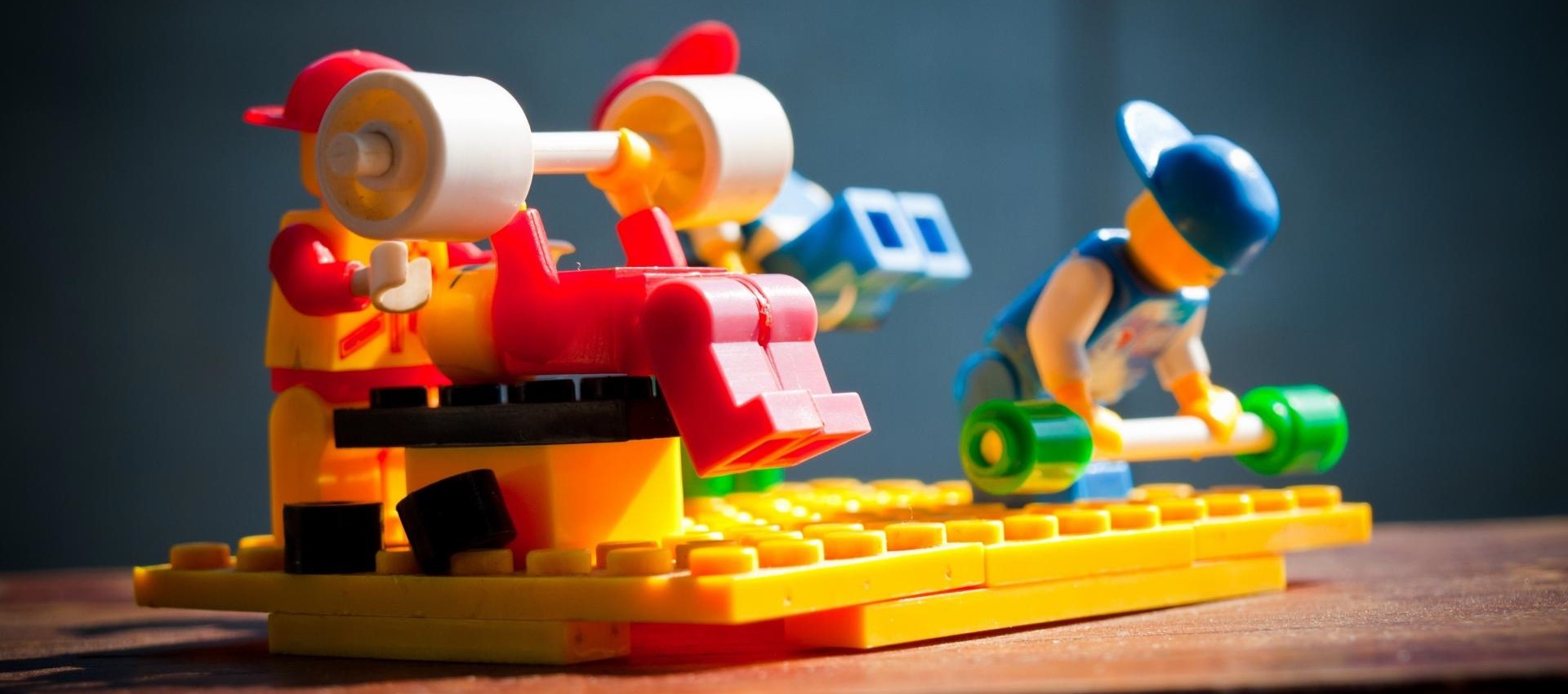
When you strength train, your muscles are broken down and then get rebuilt stronger to adapt to the stress you have applied to it.
So every time you pick up a slightly heavier weight, you are increasing the challenge and forcing your muscles to adapt and get more resilient.
Specifically, what I’m trying to say is:
If you want to get bigger, focus on getting stronger.

As long as you are continually increasing the weights or increasing the sets and reps you are lifting, your muscles will continually adapt to get stronger.
This is called “progressive overload” and it. is. everything.
NF Coach Jim walks you through the ins and outs of progressive overload in this video:
If you want to dive in more, check out our guide “What is Progressive Overload?“
Follow a progressive overload strategy and eat enough calories, and you will get bigger.
Let’s dive into more specifics with programming and exercises so you can maximize your muscle growth potential:
VOLUME
Volume refers to the total number of sets and reps you challenge your muscles with each week.
For most people, we recommend starting with 10-20 working sets per muscle group per week. Getting more volume (more sets of exercises) per week resulted in more mass compared to less volume (fewer sets of exercises), in this study[9]
That might look like:
- 6 sets for your quads on Tuesday, and then another 6 sets on Friday
- 4 sets for your chest on Monday, Wednesday, and Friday
- Or 3 sets for your back on Tuesday, Thursday, Saturday, and Sunday
How you break it up will really depend on your schedule (which we’ll get to in a minute.)
What about repetitions per set? While recent studies show that any rep range from 5-30 reps per set stimulates an equal amount of muscle growth as long as the set was brought close to failure, practically, we’ve found that most of our clients do really well in the 6-15 rep range, with 2-3 working sets per exercise. [17]
INTENSITY
Remember when we talked about progressive overload? That comes into play right here.
You want to come within 1-3 reps of failure for your working sets. That means you pick a weight and do enough reps that you can only do 1 to 3 more before you can no longer perform the exercise with proper technique. [10][11]
Don’t risk an injury by trying to lift too much weight too soon, but make sure you regularly test whether you can lift a few more pounds in your lifts.
TEMPO
Maintaining tension in the muscle for longer helps stimulate muscle growth. Controlling an exercise’s eccentric phase (the lengthening portion) also helps reduce injury risk. (Though strength training is one of the safest sports in the world.)
Our recommended tempo for your lifts is this:
- 2-4 seconds slow and controlled as you lower the weight
- A brief pause in the bottom position
- Athletically move the weight back up (no need to go slower than normal here)
- Repeat
SCHEDULE
You want to train each major muscle group at least 2x/week. You can divide this up in several ways:
- 2-4 full body workouts per week – hitting major muscle groups in each session
- 2-3 upper body days, combined with 2-3 lower body days each week
- 2 days each of a “push” focus, a “pull” focus, and a lower body focus each week
For most people, we recommend starting with a full-body program. It’s more efficient (only 2-4 days per week instead of 5-6), and your body doesn’t NEED more workouts at this point to grow plenty of muscle.
As you progress, you can experiment with upper/lower and push/pull/lower splits if they work for your schedule and you hit a plateau in your training – though before adding more days, we recommend you double-check that your volume, intensity, and tempo are all dialed in first.
You can use movements like these in your full-body workouts:
- Squats
- Deadlifts
- Overhead Presses
- Bench presses
- Body rows
- Dips (assisted)
- Push-ups
- Pull-ups (assisted)
If you can focus on getting stronger with the above exercises and eat enough calories, you will also get bigger in all the right places.
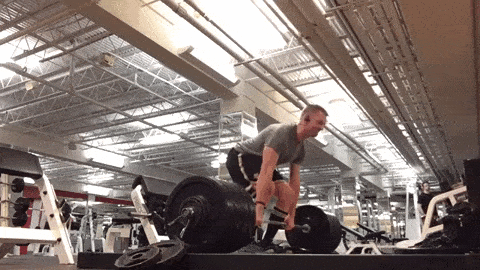
Just. Keep. Eating. And. Lifting.
Skinny Guy Workout Plans for Bulking Up

As we cover in our “How to build muscle” article, here’s a sample routine you can follow NOW to start bulking up.
After you do your dynamic warm-up, do the following workout:
MONDAY BULK-UP WORKOUT:
- Squats: 3 sets of 6 to 8 reps
- Bench press: 3 sets of 8 to 10 reps
- Wide Grip Pull-Ups: 3 sets of 8 to 10 reps
- Dumbbell Lateral Raises: 3 sets of 10 to 12 reps
WEDNESDAY BULK-UP WORKOUT:
- Deadlift: 3 sets of 6 to 8 reps
- Dumbbell Incline Bench Press: 3 sets of 12 to 15 reps
- Inverted Bodyweight Rows: 3 sets of 10 to 12 reps
- Cable Tricep Pushdowns: 3 sets of 12 to 15 reps
FRIDAY BULK-UP WORKOUT:
- Front Squats: 3 sets of 6 to 8 reps
- Weighted Dips: 3 sets of 8 to 10 reps
- Weighted Chin-Ups: 3 sets of 6 to 8 reps
- Dumbbell Bicep Curls: 3 sets of 12 to 15 reps
Get stronger, and the rest will take care of itself.
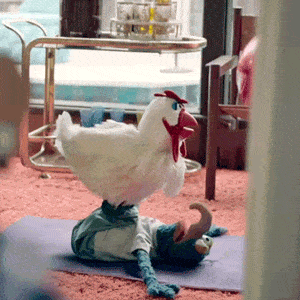
NERD FITNESS RECOMMENDATION: Feel free to pick WHATEVER workout program you want from wherever. If you don’t want to follow the workout above, consider these sources:
- 5 Beginner Strength Training Routines you can follow.
- Follow our 6-level gym workout routine.
- You can build your own workout routine.
- You can follow any workout from any muscle magazine.
If you’re curious, here are some commonly accepted strategies based on your goals for how many sets and reps you should do:
- Strength and power: 1-5 reps
- Strength and some size: 5-8 reps[8]
- Size and some strength: 8-12 reps
- Muscular endurance: 12+ reps
As we pointed out above, as long as you get close to failure, recent research shows that anything between 5-30 reps is about equal for muscle growth. So don’t worry too much about which path is best.
Nutrition plays the most important role in bulking up, and any strength training plan will help you get bigger.
What this means: Don’t overthink it.
- Pick up heavy stuff for 2-3 sets of 6-15 reps. Pick up a weight that is heavy enough that you could only complete 1-3 more reps with good technique.
- And then do a little bit more next time.
What’s important is that you pick a plan and follow through with it while focusing on eating enough.
After a few months, you can reevaluate and then adjust based on how your body has changed. [18]
And as we showed, feel free mix in bicep curls or tricep extensions or calf raises at the END of your workouts.
Focus on the big lifts first and get stronger with them.
How much weight should you lift? For every one of the barbell movements above, it’s okay tostart with just the bar, and then add weight in 5 lb (2.2kg) increments each week.
It’s important to get form right and get your body used to the movement for when you start to lift heavy weight.
How long should you wait between sets? Again, don’t overthink it.

Waiting 60-90 seconds puts more of an emphasis on muscular size and endurance (as you’re resting for a shorter period). Waiting 2-3 minutes allows you lift heavier weight, and thus can make you stronger.
..but don’t overthink it. Do the next set when you’re ready.
A piece of advice from 8-time Mr. Olympia, Lee Haney: “stimulate, don’t annihilate.”
Don’t destroy yourself for the sake of destroying yourself; stopping one or two reps short of maximum effort can save you from overtraining and potential injury – remember that muscles are built in the kitchen!
Can Bodyweight Training Help Me Bulk Up?

Yes, you can get bigger and stronger by doing exclusively bodyweight exercises.
Take a look at any Olympic gymnast: he is jacked, with giant muscles, all built with bodyweight exercises:

It all depends on the same rules we laid out above.
Can you target the muscle groups you are trying to grow with exercises that create a high amount of tension and take you close to failure after doing 6-15 reps?
If your answer is “yes”, then that bodyweight exercise is a great option for you! In fact, things like inverted rows, chin-ups, pull-ups, dips, push-ups, lunges, etc. are all fantastic exercises to help you put on muscle.
However, some people may find it difficult to get that right level of “challenge” with certain bodyweight movements.
Maybe you have a hard time finding upper body or bicep movements that feel good without using weights.
Maybe you can do countertop push-ups for more than 15 reps, but when you try to progress to a harder variation you don’t have any surface in your house that quite works so you feel stuck.
And that’s the crux of the issue:
Like with weight training above, you need to increase the difficulty in order to challenge your muscles to adapt.
Because it’s often more challenging to add a few pounds to a bodyweight exercise to make it tougher – compared to putting a weight on a bar, you need to increase the difficulty of the bodyweight movement itself.
You may need to experiment with higher rep ranges (15-30 reps) to push your muscles closer to failure.
- If you can do 4 sets of 15 push-ups, consider making them harder to progress. Do 4 sets of 15 push-ups with your feet on a bench.
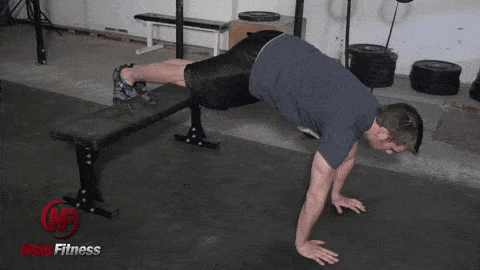
- Bodyweight squats too easy? Work your way up to pistol squats (one-legged squats).

4 sets of 12 pull-ups not a challenge anymore? Great. Make them tougher. Go for a wider grip, an uneven grip, or weighted pull-ups.

I highly recommend beginners take a serious look at strength training with free weights; it’s much easier to record one’s progress, easy to add more difficulty (just add more weight!), and very structured.
You can ALSO mix in bodyweight training! Really, it’s just about finding the group of exercises that works best for you, regardless of whether their bodyweight, barbell, dumbbell, machine, or anything else!
Here’s an example from my own training. I have been working with my online coach for 7+ years, and I’ve packed on size by following a barbell + bodyweight training routine.
Weight training for my lower body, advanced bodyweight movements for my upper body.
Every day starts with either a squat, front squat or deadlift.
Here I am pulling 420 pounds at a body weight of 172 pounds:

Each workout also contains a lot of Olympic/gymnastic-style movements to build upper body strength.
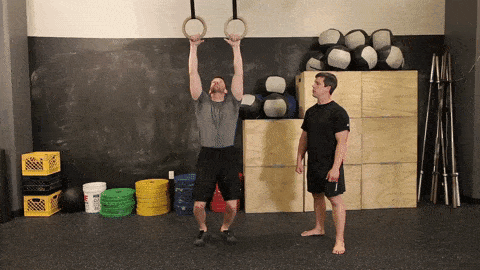
And I just try to get stronger.
What it really comes down to is this: no matter what you have access to (a gym, barbell, dumbbells, or just a pull-up bar), you can find a way to build strength and muscle if you follow a plan and eat enough calories.
If you’re trying to bulk with just bodyweight, it might be worth enlisting the help of a coach to help you scale your bodyweight exercises correctly and in the proper sequence!
I am Skinny Fat: Should I gain or lose weight first?

If you are skinny fat (you have skinny arms and legs but have a gut), there are three paths available to you:
- Bulk up and build muscle, then lean out.
- Lean out, then build muscle.
- Build muscle and lean out at the same time.
We all want Door #3, right?
Here is how to accomplish both goals at the same:
- Heavy strength training…
- While following a healthy diet and slight calorie restriction…
- To decrease your body fat percentage.
If you follow a program with the right calories and strength training, you can both lose weight AND build muscle at the same time.

It’s how we helped NF Coaching Client Jimmy (these photos are 5 months apart):
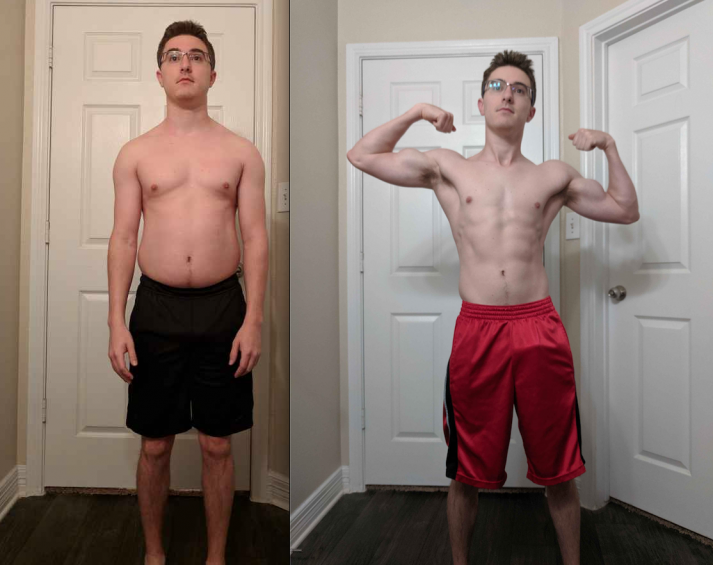
NF Coach Matt recommends the following strategy, as long as you also know there are tradeoffs!
Get strong and eat a SLIGHT caloric deficit while consuming enough protein every day.
Get yourself down to roughly 15% body fat (~25% for women), and then start to increase the size.
By slimming down first, while building muscle, you don’t have to worry about buying BIGGER clothes first, only to then need smaller clothes once you start cutting the fat.
Then, once you decide to eat more and get bigger, if you notice your body fat percentage start to creep up, you can simply adjust until your body fat gets back in the acceptable range. Then keep building!
What about those tradeoffs Coach Matt mentioned?
Anytime you focus on two different goals at once (losing weight AND building muscle), neither of those will be done optimally. You can build muscle more quickly if you focus on that as your main goal, eat more calories, and continue to challenge yourself in your workouts. You can also lose weight faster if you go into a slightly larger caloric deficit than recommended above.
Balancing these two goals isn’t necessarily a bad thing. You’ll be able to get plenty strong and lean out a bit without having to manage bigger changes in your diet, which can be easier to sustain.
If you get stuck in the future, focus on one thing at a time.
To recap, here’s what to do if you are skinny-fat:
- Eat a caloric deficit while heavy strength training to build muscle while leaning out.
- Prioritize protein intake: 0.8g per pound (1.6g per kg) of body weight.
- Get strong as hell with compound lifts and a moderate rep range (this will build muscle even in a deficit).
Once you reach a certain body fat percentage you’re happy with, then you can increase your caloric intake to build more size.
Proper Sleep and Rest for Putting on Muscle

Last but not least, the other important piece to this Triforce of muscle building:
Strength training, eating enough, and RECOVERY.
Your body builds and rebuilds its muscles during RECOVERY.
Our muscles generally need 48 hours or so to recover from their previous workout, so I do not recommend you do any serious strength training of the same muscle group on back-to-back days . [20]
Feel free to do dynamic warm-ups or fun exercises as active recovery on off days, but I tend to take my off days OFF.
I might go for a walk (to Mordor!), but that’s about it.
A word about cardio: if you are serious about getting bigger and stronger, lots of long-distance cardio will work against you.
It’s something Coach Jim brings up in the video “7 things I learned adding on 50 lbs of muscle”:
As Coach Matt says, when you do a ton of long-distance cardio, it’s hard to eat enough calories to grow bigger. You’re also training for efficiency rather than size, which stimulates a different type of adaptations in your muscles.

If you love to run/bike, that’s cool, as long as you know it’s slowing (or halting) your progress.
So, cut back on the running or cut it out completely.
Try mixing in sprints and interval training if you want to keep the cardio up without having to do all of the crazy distances. You can always add it back in once you accomplish your weight gain goals.
A few words on SLEEP: You need more of it when you are building muscle.
It’s that simple.

Don’t be surprised if after a heavy deadlift day you find yourself wanting to sleep for 10 hours.
It might mean less TV or less video games.
Again, if you are serious about getting bigger and stronger, don’t neglect sleep.
FAQ for Skinny Guys Trying to Bulk Up
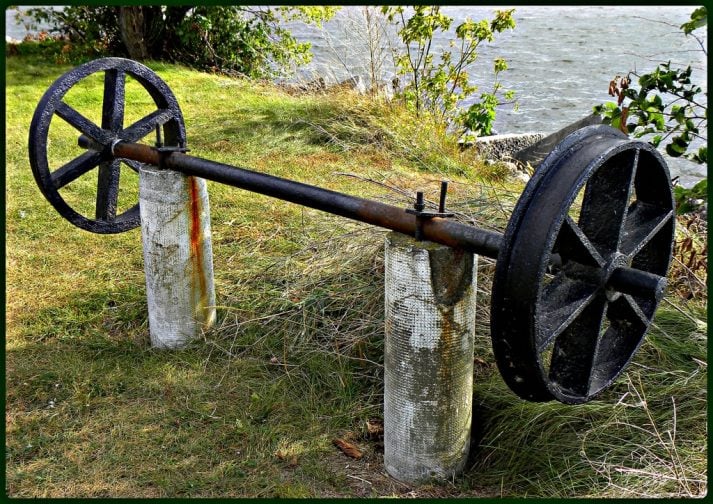
QUESTION #1: “But I just want to get toned, I don’t want to get too bulky.”
That’s not a question, but I hear it all the time. Do NOT worry about getting too bulky. I’ve been trying to get “too bulky” my entire life – it takes years of concerted effort to pull that off.
I’m gonna guess you have 30+ pounds to gain before you’d ever even be considered “bulky.”
That means that if you struggle with weight gain, getting to the point where you are TOO bulky would actually be a good problem to solve.

As you start to put on weight if you ever find yourself getting a tiny bit too chubby, simply eat less at that point!
So, when in doubt, always err on the side of too many calories than not enough. If you’re not sure if you should eat or not, etc.
QUESTION #2: “But I don’t want to do that stuff, so I’m gonna do _____ instead.”
Hey, go for it. Give it a month, and see how your body reacts. If you’re getting bigger, stronger, and healthier, keep doing it.

If not, come back to this article and apply the lessons here!
QUESTION #3: “I’m a vegetarian/vegan, can I bulk up?”
Absolutely. You just need to make sure you’re getting enough calories and enough protein in your system to promote muscle growth.
In order to optimize muscle protein synthesis, plant-based eaters may actually need MORE grams of protein per day (~1.0g/lb of body weight).
Beans and nuts have lots of protein; if you’re vegetarian you can still use dairy to your advantage (whey protein, whole milk, cheese, etc.).
If you’re vegan, then it’s slightly more of a challenge to get enough protein, but it can be done!
Check out our plant-based protein suggestions.
QUESTION #4: “Should I do ___ reps and sets or _____ reps and sets?“
Either plan will get you there. As long as you have your diet dialed in, either will work.
What’s important is that you pick a plan, you progress, you keep track of your results, and you consistently progressively increase the load that you are moving (be it your body’s weight or an actual weight).
QUESTION #5: “I want to get bigger and faster and have more endurance and flexibility ALL at the same time, can I do that?”
I hate to say it, but building endurance and getting bigger simultaneously is brutally difficult.

As I point out in “How to build any physique,” compare a marathon runner’s body with that of a sprinter or gymnast. Put the running on hold for a while, and focus on getting bigger: you’ll get there faster.
That being said, low-intensity cardio like 20 minutes of bike riding, walking, etc. isn’t likely to dent your gains all that much and can be good for heart health and enjoyment all around.
When you decide to mix longer distance endurance training back in, keep your calorie consumption high, and don’t forget to keep strength training!
QUESTION #6: “Do I need to eat every three hours?”
Nope, you don’t have to:
- The TOTAL number of calories you consume over the course of a day is more important than the timing of the meals.[14]
- The same is true with protein intake: studies show it doesn’t matter WHEN you eat your protein. HOW MUCH you consume in a day is more important.[15]
But eating more frequently might help…
If you struggle to get enough calories in your system, spacing out your meals might help you feel less full, or give you more opportunities to reach your calorie goal for the day.
QUESTION #7: “But what about this other article? And this other thing I read? Which workout is the best workout?“
Don’t overwhelm yourself. Keep it simple. Get stronger, eat more food, sleep. Break this down into simple steps and goals that aren’t scary, and get started.
The best advice I can give you is to start and make adjustments along the way.
Track your progress, track your calories, and track your workouts.
If you are getting bigger and stronger, keep it up!
I know this stuff can be overwhelming, as I struggled with this stuff for YEARS before getting results.
It’s why after I started Nerd Fitness, I eventually launched a coaching program: to help people skip the years of mistakes I made!
More Resources for Skinny Guys Looking to Bulk Up
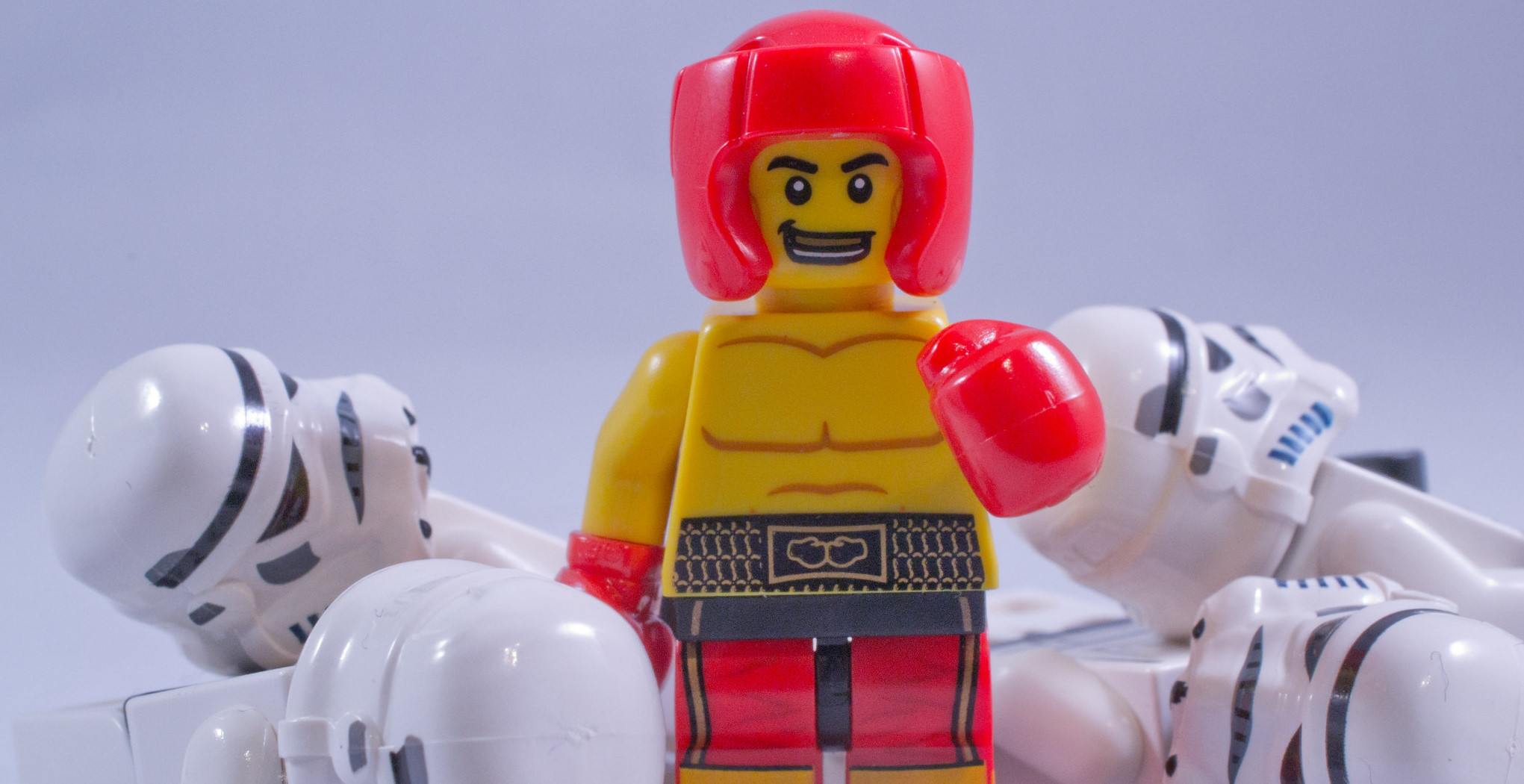
This is a monster of an article, and your head probably hurts at this point.
If I can narrow it down to three main points:
- Get stronger by picking up heavy stuff or doing more challenging bodyweight movements.
- Get bigger by eating enough.
- Recover faster by sleeping enough and giving your muscles days off to rebuild.

If you made it this far, and you want more specific instruction and guidance, we have a few options for you:
1) If you are somebody who wants to follow a tailor-made program that’s designed around their life and goals, check out our popular 1-on-1 Online Coaching Program.
You’ll work with our certified NF instructors who will get to know you better than you know yourself, check your form, and program your workouts and nutrition for you.
2) Download our free Bulk Up Guide, which you can get when you sign up in the box below:
May you achieve ALL THE GAINZ!
-Steve
PS: Make sure you check out the rest of our Bulk Up guides:
- How to build muscle quickly
- How fast can I build muscle?
- 9 Mistakes People Make Trying to Get Bigger
- 13 Tips for Guaranteed Weight Gain.
###
photo source: Not Happy, Marina Pissarova © 123RF.com, magone © 123RF.com, Ekaterina Minaeva © 123RF.com, Morning run with the Fitbit, Inna Vlasova © 123RF.com, Viktor Hladchenko © 123RF.com; Olga Yastremska © 123RF.com; famveldman © 123RF.com; 167/366, LEGO bench

